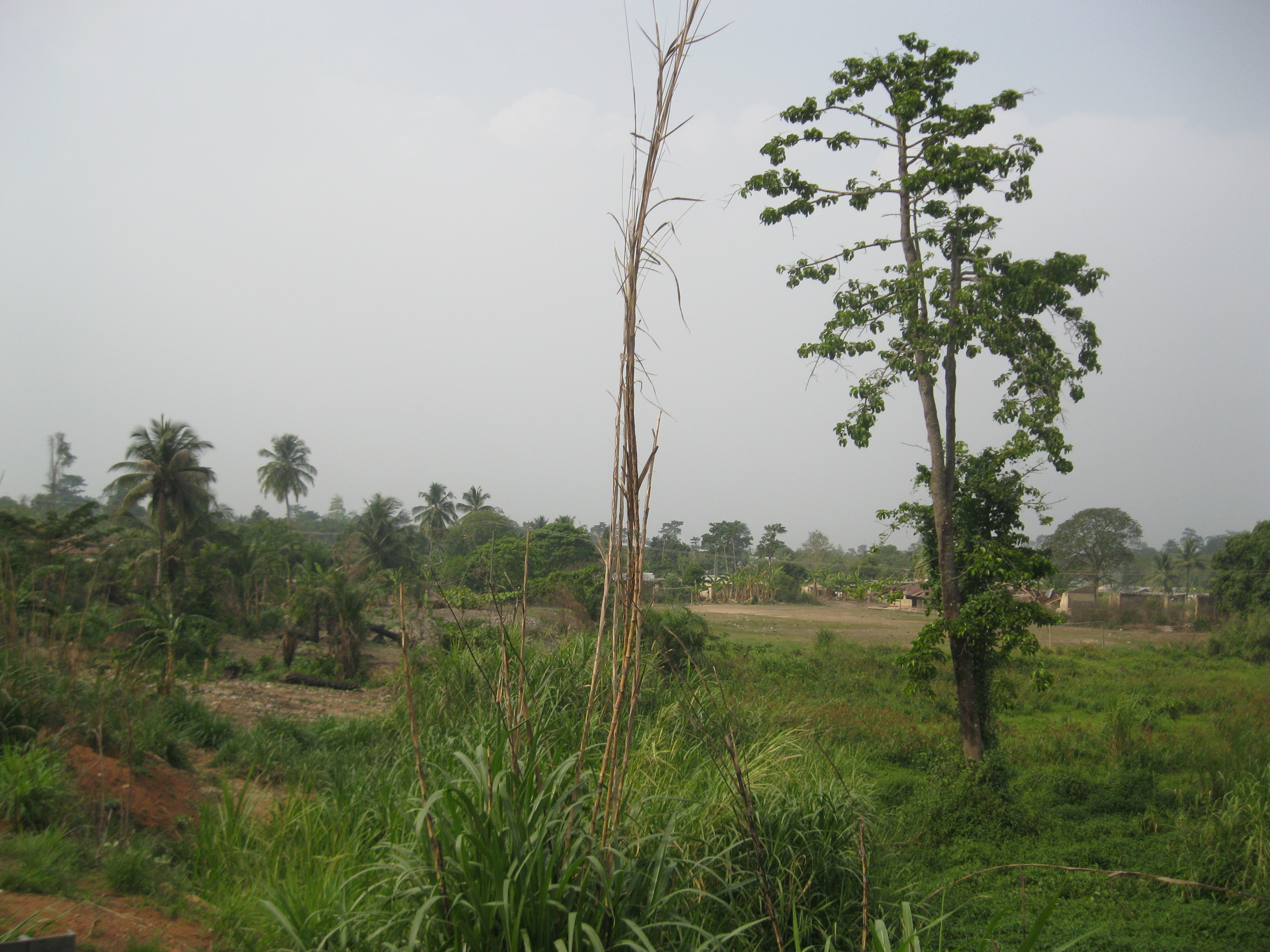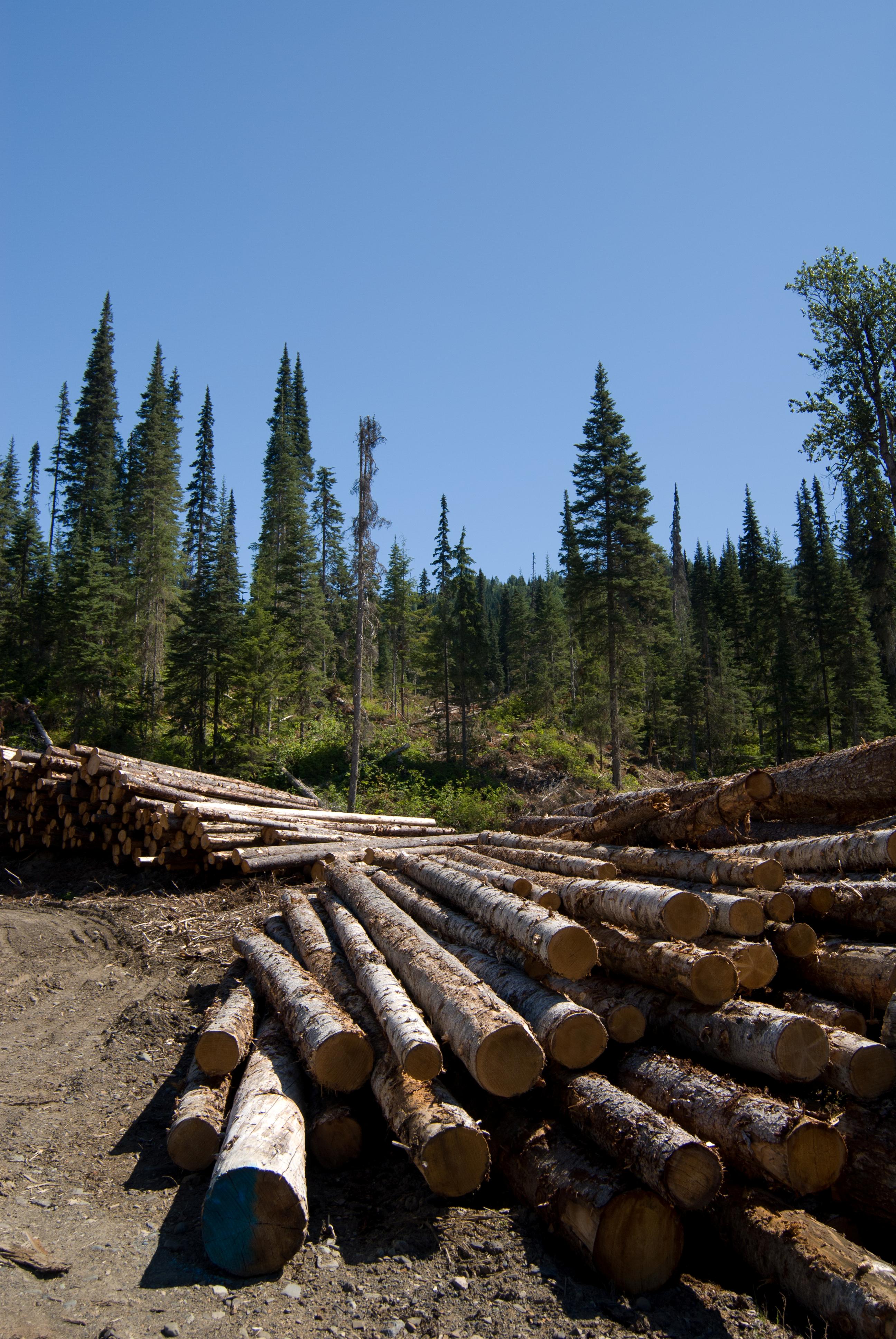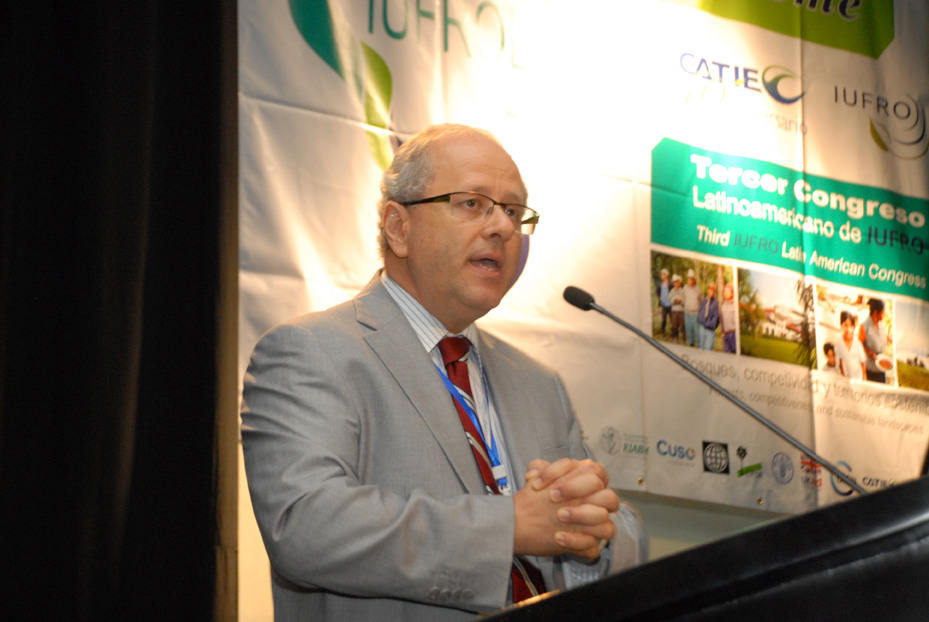A changing forest sector: Globalization triggers bio-economy and the search for new business opportunities
Scientists, practitioners and decision-makers from around the world meet in Vancouver, Canada from 27 to 30 August 2013 to discuss the implications of globalization on forests and their management.
PDF of Press Release for download
(Vancouver/Vienna, 27 August 2013) Globalization is changing forests and the forest sector. Increases in international trade and investments have altered the global business environment for forestry. The growing world population moving towards nine billion by 2050, economic growth, rising resources demand and increasing environmental concerns are other drivers fostering transformation in forestry and the management of forests. New players enter the global market, and the bio-economy –– the production of ‘green’ products from renewable resources –– is gaining weight. From 27 to 30 August 2013, more than 100 representatives from research, industry and government will discuss how global trends influence forest resources, and how new opportunities for forest entrepreneurs and a more resource efficient society can be harnessed. The Conference has been organized by the University of British Columbia (UBC), Faculty of Forestry, on behalf of the Task Force “Resources for the Future” of the International Union of Forest Research Organizations (IUFRO).
IUFRO Spotlight #14 – Wildfire projected to spread like, well, wildfire
Wildfire projected to spread like, well, wildfire

Boreal wildfire, Saskatchewan, Canada (Photo by Bill de Groot, Natural Resources Canada – Canadian Forest Service)
A recently published study: Global Wildland Fire Season Severity in the 21st Century, indicates that in coming decades, conventional approaches to wildfire management may no longer be effective.
It appears in a Forest Ecology and Management journal special issue entitled The Mega-fire reality, published by Elsevier. The study is a first global review that shows the extent of the increasing length of the fire season and the increasing fire weather severity.
IUFROLAT III Session Highlights: International Forest Governance
International forest governance and its influence on the convergence of forest policy in Latin America
For more information on the IUFRO Task Force on International Forest Governance, visit: http://www.iufro.org/science/task-forces/intl-forest-governance/
Globally, great strides have been made in the last 20 years as to what constitutes responsible forest governance. Yet, frustrations exist at the scale and pace of change. In Latin America, there continues to be a notable gap between ‘rules on paper’ and ‘rules in use’ in most countries, and governance tends to remain firmly based in ‘command-and-control’ approaches established decades ago.
In the session entitled “International Forest Governance and its influence on the convergence of forest policy in Latin America”, leading scholars in this field discussed what political science can do to improve international forest governance in the region through a mix of existing and emerging environmental policy instruments.
Reported cases of “carbon cowboys” deriving indigenous communities from intended benefits from REDD+ have created mistrust and infighting and have raised questions about the usefulness of market-based approaches to environmental problems such as climate change. Yet, the political scientists concluded that – if well designed – market-based instruments such as forest certification or payments for environmental services can help deliver effective policy outcomes. Costa Rica can be cited as a positive example on how new forms and modes of governance have successfully been incorporate into forest policy.
The session also discussed the newly emerging discourse on “rights of nature” in which nature is treated as a ‘subject’ rather than an ‘object’ in environmental legislation. While the notion of collective property rights reflected in this new approach can be seen as a more ethical approach to natural resources, it may however also be motivated by more mundane considerations, such as the intention to bargain for increased financial support from the international community.
Overall, the examples presented in the session indicated the need to incorporate new forms and modes of governance into forest and environmental policy in Latin America. If well-designed, instruments such as legality verification can help form large coalitions of actors and can trigger a “ratchet up” towards better forestry standards in the region.
Presentations in this session:
Policies for promoting sustainable forest management: Convergence of domestic policies and instrument mixes across Latin America (Kathleen McGinley, International Institute of Tropical Forestry, USA)
Carbon cowboys: case studies from Peru (Wil De Jong, Kyoto University Japan)
International forest governance and the rights of nature discourse in South America (David Humphries, UK)
Adaptation of tropical forest management in climate change (Rod Keenan, University of Melbourne, Australia)
Agroforestal systems as an alternative to coca crops in the Chapare region of Bolivia (Eduardo Lopez Rosse, UMSS, Department of Natural Resources, Bolivia)
Factors driving botanical tree diversity in agroforestry systems in Central America (Jenny Ordonez)
IUFROLAT III Session Highlights: Threats to Forest Health
Threats to Forest Health – Forest Pests and Diseases, Biological Invasions, Air Pollution and Climate Change
For more information on IUFRO Division 7 Forest Health: http://www.iufro.org/science/divisions/division-7/
The papers presented in this session addressed the relationship between changing climatic conditions and biotic factors such as bark beetles and wasps causing forest health problems of various degrees.
One paper highlighted present and projected changes caused by interactive impacts of increasing temperatures, ground-level ozone, nitrogen deposition, and CO2 on forests growth and soil and water processes in south-western and northern forests in the United States. These changes may predispose forests to altered water regimes, biodiversity insect attacks, wind-throw, frost damage and catastrophic fires.
Other presentations highlighted the effects of insects on forests in Northern and Central America. Generally, the number of severe outbreaks is increasing, but little is known about the causes of these calamities. Recent research clearly indicates, however, that several earlier benign insect species show damaging outbreaks because of increased stress on the ecosystem. Range expansions of e.g. bark beetle could also be observed and appear to be closely linked to changing climatic conditions.
A cost-benefit analysis of surveillance of ash borer population which is rapidly spreading in many regions due to international trade is worthwhile and cost-effective. Using bio-economic modeling on surveillance trapping helps to optimize surveillance and eradication programs. Given the increasing frequency and severity of insect outbreaks in Northern America continuous surveillance of invasive wood borers and bark beetles is also recommended for Latin America.
Presentations in this session:
Interactive effects of air pollution and climate change on forests in the United States (Andrzej Bytnerowicz, USDA Forest Service, USA)
Sirex noctilio in Argentina: What we know and still need to know to manage populations successfully (Juan Corley, Argentina)
A cost-benefit analysis of surveillance for invasive wood borers and bark beetles (Eckehard Brockerhoff, IUFRO Division 7 Coordinator, Scion, New Zealand)
Evaluation of mortality in natural stands of Pinus ocarpa an P. caribeae in Nicaragua (Lori Eckhart, Auburn University, USA)
The bark beetle outbreaks of Western North America (Christopher Fettig, Pacific Southwest Research Station, USA)
Second Session: Threats to Forest Health: Forest Pests and Diseases, Biological Invasions, Air Pollution and Climate Change
The main focus of the session was the impact of invasive species on forests and solutions for tackling these problems. Examples were given from different countries and continents including the US, South Africa, Argentina and New Zealand. Solutions are various and obviously depend on the respective case.
Common issues related to globalization and its impact on forest health were raised by all speakers. Live plant material, including seeds, have been implicated in many cases as pathways for invasions of alien pests and pathogens of forest trees and other plants. Solving this problem is difficult because many plants may be asymptomatic and infected plants may thus be difficult to exclude. Answering specific research questions, such as what type of organisms invade from where and related aspects, are required to allow informed decision-making. These are complex problems that require application of newest technologies and also require broad international collaboration.
Actions taken for integrated pest management include education of students, companies, pupils; communication with all stakeholders and the inclusion of locals in monitoring activities. Last but not least, training, early research including close collaboration and teamwork, the maintenance of quarantine facilities are keys to success.
It was recognized that in many countries, there is not good communication between forestry researchers and plant quarantine agencies that hold the responsibility for solving these problems. The group also concluded that the problem of biological invasions is perhaps not adequately recognized by the forestry research community, including within IUFRO. This suggests that there remains a need to educate the broader research community on the importance of this issue.
Presentations in this session:
Invasions by non-indigenous forest insects and diseases in the US (Andrew Liebhold, US Forest Service, USA)
Continuing spread of plantation pests and pathogens – is there a solution? (Jolanda Roux, University of Pretoria, South Africa)
Advances in IPM of a key pest of poplars in Argentina, Megaplatypus mutates (Mariana Moya, Universidad de Buenos Aires, Argentina)
Successful forest protection is a multifaceted endeavour (Tod Ramsfield, Natural Resources Canada)
IUFROLAT III Keynote Address by Eduardo Mansur, FAO
Challenges and Opportunities for Sustainable Forest Management in a Changing Context
Wednesday, 12 June 2013
The first keynote speaker at IUFROLAT III was Eduardo Mansur, Director of FAO’s Forest Assessment, Management and Conservations Division. He talked about “Challenges and Opportunities for Sustainable Forest Management in a Changing Context”.
First, however, he conveyed greetings from Eduardo Rojas Briales, Assistant Director-General and Head of the Forestry Department, Food and Agriculture Organization of the United Nations, on whose behalf he was giving this presentation.
Mansur started by asking what the world should be like in 2050, when the world’s population is estimated to have exceeded 9 billion people.
Pressure on natural resources and the need for food will have increased tremendously by that time. He identified the following major challenges:
1) Food
2) Energy
3) Climate Change
In order to respond adequately to these, which are in fact closely interrelated, he explained various necessary approaches such as the landscape approach. He also underlined the big potential of restoration for improving the environmental situation without affecting food security.
In view of these challenges, the main objectives of FAO are:
1) Eradication of hunger
2) Elimination of poverty and strengthening of economic and social progress
3) Sustainable management of natural resources
Part of the response to these challenges is better governance of resources and more social participation. Integration and inter-sectorial approaches are key here. This is also especially true for forest research, which needs a more integrated approach.
Mansur explained concepts and tools that FAO has worked with so far and will continue to use in the future, such as the concept of sustainability, the forest resources assessment (FRA), criteria and indicators, etc.
In conclusion, he identified communication and social networks as a key tool to change people’s often blurred conceptions especially with regard to forest management. Science and research are essential here as they can provide the data and knowledge which will help to do away with erroneous perceptions and trade-offs between biodiversity and forest use, for example.
IUFRO Spotlight #8 – Combatting Climate Change Comprehensively
Combatting Climate Change Comprehensively
By Ben Chikamai (Kenya Forestry Research Institute)
IUFRO Board Member, Kenya

Degraded forest landscape in the Offinso District, Ghana. The original high forest cover has been modified through over-exploitation of wood resources, agriculture activities, and establishment of human settlements. (Photo by Ernest Foli, FORNESSA)
African forest policy makers and governments could benefit by using a recent study as a template to help bring climate change adaptation into the mainstream of national development strategies.
The study, conducted in two forest-dependent areas in Africa, emphasizes cross-sectoral planning – recognizing and incorporating interacting priorities, such as agriculture, health, forestry, land-use planning, water resources, energy, education, etc. – as a key element in implementing any effective climate change adaptation strategy.
Forests can play an important role in achieving climate change adaptation goals in Africa. But sustainable forest management decisions alone can’t accomplish that. Policy decisions – for forests as well as other resource areas – must complement one another. At present, impacts from some of those other sectors may actually be threatening the forests.
There are a number of pressures on Africa’s forests – agricultural expansion and forest over-use among them. Reducing non-climatic pressures, in a logical, prioritized manner, can help reduce the vulnerability of forest ecosystems. That’s crucial because many people in Africa are highly dependent on forest goods and services. Those people are, and will continue to be, particularly vulnerable to the impacts of climate change. Improving the capability of forest dependent communities to adapt to a changing climate will reduce that vulnerability.
The study: Enhancing Adaptation of Forests and People in Africa – Development of Pilot Cases for Selected Forest Ecosystems in Ghana and Malawi, examined forest issues related to climate change in selected areas of those countries. The authors, E.G. Foli and S. Makungwa, worked in those specific areas because they represent typical examples of the ecological and socio-economic situation prevalent in Sub-Saharan Africa, so the findings could also be applied to countries in West, Central, Southern, and parts of East, Africa.
Among other findings, the study confirmed a general trend of increasing mean annual temperatures and a decline in mean annual rainfall. In the Ghana pilot area this has resulted in forest loss due to wildfire; a decline in the availability of non-timber forest products; reductions in agricultural crop yields; and declining potable water supplies and the associated risk of water-borne diseases. In the Lake Chilwa area of Malawi, in addition to declining potable water supply and its associated disease risks, there has also been poor productivity on tree farms; loss of indigenous trees in communal areas, riverbanks and surrounding forest reserves; a decline in agricultural productivity; and declining fish catch from the lake.
While the study noted how changing climatic conditions can adversely affect livelihoods, health and food security in those communities, it also noted examples of locally initiated adaptation strategies developed to mitigate the impacts of the changing climate. By compiling existing information, including the needs of stakeholders in the various inter-related resource areas, consulting with local communities and assessing and evaluating each project site, enhanced and concrete adaptation measures for the pilot areas were developed.
Then, a priority setting exercise was carried out to identify appropriate and relevant adaptation strategies and activities that would best serve the communities. Similar techniques could be used across a much wider area, the authors say, but that will require political will, financial commitment, and an integrated multi-sectoral – even trans-national – approach. It’s a challenge, they agree, but one that must be faced.
The full study can be found at: http://www.fornis.net/content/enhancing-adaptation-forests-and-people-africa-development-pilot-cases-selected-forest-ecosy
IUFRO Spotlight #4: Forests: The Carbon Conundrum
By Robert Jandl, Deputy Coordinator of IUFRO Division 8
(BFW, Austria)
In the coming decades, forests will play a major role in our planet’s carbon cycle and in our efforts to manage the amount of carbon in the atmosphere.
Getting a better understanding of whether that role might be good (a sink, absorbing carbon) or bad (a source, adding carbon to the atmosphere), motivated a study by Yude Pan and colleagues, recently published in Science Express.
The study identifies global forests as the major terrestrial carbon sink (as opposed to grasslands, peatlands or agricultural lands). It is the first such study to base conclusions on forest inventory and land cover data instead of simulation results. Read more…


